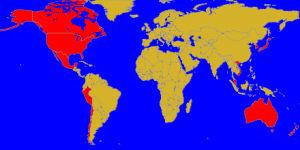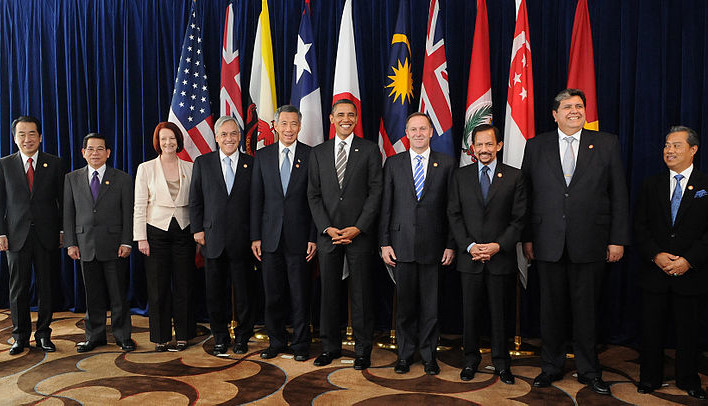As the sixteenth round of negotiations over the Trans-Pacific Partnership (TPP) closed in Singapore last week, it is time to examine the nature of the proposed free trade agreement. The TPP, if instituted, would be a major expansion of the 2005 P4 agreement that liberalized trade between Singapore, Chile, Brunei, and New Zealand. Formal talks for the TPP began in 2010, and since then the United States has led the charge of negotiating countries eager to join. The last time the United States met with the other prospective participants (Canada, Mexico, Australia, Peru, Vietnam, Malaysia, and now Japan) was in December. Now, meeting in March, news broke last week that Shinzo Abe and Japan seek a seat at the negotiating table, a move that could come either as a surprise or as expected. On one hand support for the TPP will bring Abe substantial flak from domestic farmers (even if the support is conditional to the effect that some agricultural tariffs won’t be touched); on the other the prime minister has made clear the importance of structural reform in his overhaul of Japanese economic policy. Either way, however, the TPP seems to be gaining steam on both sides of the Pacific.
But is this necessarily a good thing? To what extent is the United States playing a geopolitical game in their impassioned push for trade liberalization in Asia?
The Trans-Pacific Partnership would constitute, in many ways, an ideological containment of China, a nation long criticized for its extensive regulations, and is acknowledged to comprise a part of President Obama’s plan to strengthen U.S. dominance in Asia. To many critics, such regional trade agreements, while not new, undermine the World Trade Organization and lead to trade diversion. It is a simplification to say that the consequence of the Trans-Pacific Partnership will be to divide an emerging Asia, but it cannot be ignored that of the world’s fifteen largest economies, China is the only one of seven Pacific-rim nations to not be invited or included in negotiations (although South Korea, which already has a free trade agreement with the U.S., isn’t making any promises). And considering that the United States already enforces individual agreements with Canada, Mexico, Singapore, and South Korea, and is currently in negotiations with Malaysia and New Zealand, one has to wonder what the U.S. really hopes to gain with the TPP.

Another way to look at the Trans-Pacific Partnership critically is in light of U.S. support for financial deregulation measures included in the agreement. If there is anything to be learned from 2008, it is to be wary of practices that seek to universally promote such capital flows. The Financial Times Kevin Gallagher writes eloquently of how the United States consistently “stands on the wrong side” of regulatory practices, a trend that culminated with the advent of the so-called “Washington Consensus.” But even as the United States continues to promote these policies, the IMF and other global institutions of its kind, once the main proponents of fast and sweeping liberalization, have changed their tune. The argument that financial liberalization opens up economies to high levels of risk and makes them more crisis-prone is not a new one, but it certainly bears repeating with respect to the TPP.
I have argued before that economic integration, cooperation, and liberalization are good things for all parties involved, most recently in regards to slim possibilities of change in North Korea. The potential and success of free global trade cannot be altogether denied. But my advocacy of these principles extends only so far; it has also been proven that quick liberalization without regards to stringent financial regulation or the strength of existing domestic structures can be disastrous. This brings us back to the Trans-Pacific Partnership, an agreement that does not necessarily have to bring with it such negative consequences. However, should the U.S. decide that they do want to play a constructive role in the Pacific region, they must first convince the world that they don’t wish to wreak havoc on an emerging region. By affirming a desire to integrate and not isolate China, and by backing off deregulatory financial measures, they can begin to do so.
